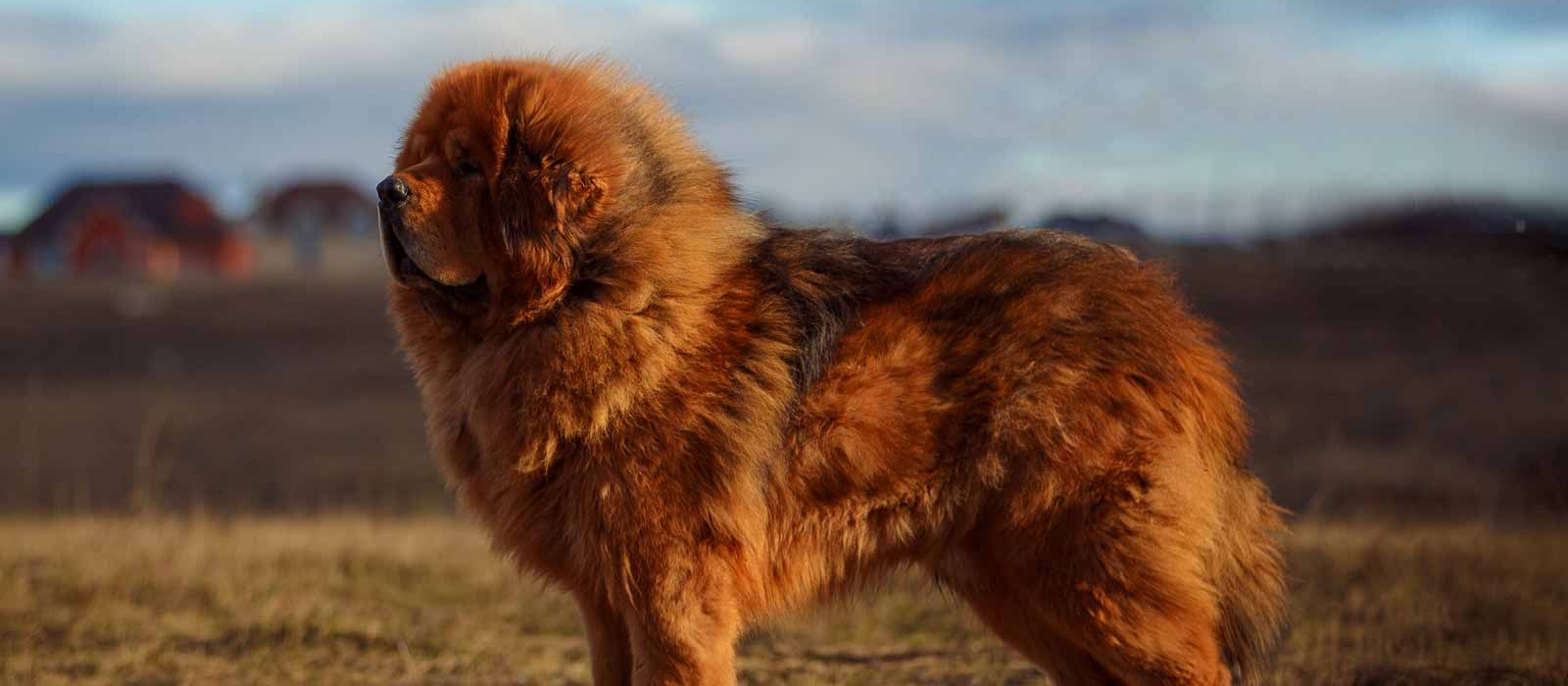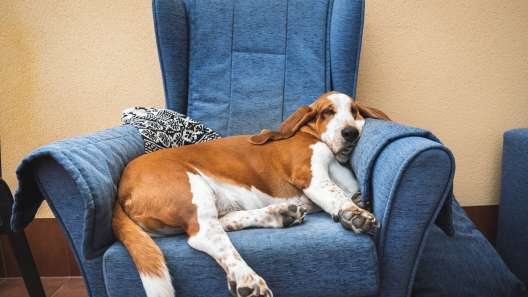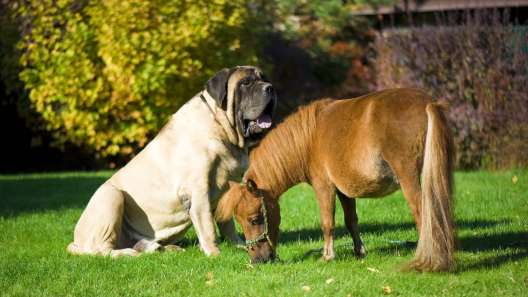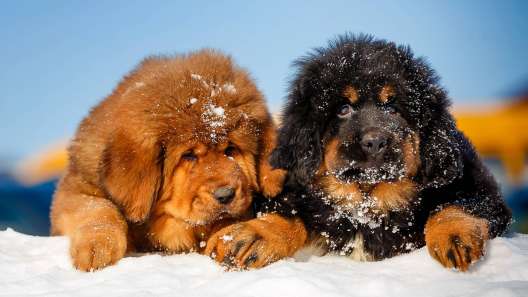-
Activity Level:
moderate
-
Shedding Level:
high
-
Grooming Level:
moderate
-
Trainability:
low
-
Good for Novice Owners:
low
-
Adaptability:
moderate
-
Kid/Pet Friendly:
often
-
Prey Drive:
moderate
-
Watchdog:
very alert
- Average Size: Large
- Average Lifespan: 10-12 years
- Registered?: aca, akc
Tibetan Mastiff Dog Breed Information
Overview
Temperament
Adaptability
Health
Owner Experience
Grooming
Activity Level
Size
Life Span
Did You Know?
The Tibetan Mastiff is a courageous Molosser breed with quite an interesting history. Dating back as early as 1100 BC, they are one of the most ancient guardian breeds. You can tie the heritage of almost every large dog breed in the world to the Tibetan Mastiff through shared ancestry, including breeds like the English Mastiff, Bernese Mountain Dog, and Anatolian Shepherd.
One of the facts about Tibetan Mastiffs is that they were ancient war dogs. This breed was a traveling companion of the Hun army led by Attila against the Eastern Roman Empire in the mid-5th century AD. The Tibetan Mastiff continued to be a vital part of security for the military camps during this campaign, as it had done for so many centuries. This dog breed has been a recognized member of the AKC Working Group since 2006.
The Tibetan Mastiff is a guardian dog that has often been charged with the security of a herd, village, or family for over 3,000 years. They are strong-willed, protective dogs who are affectionate with their families and will be reserved with strangers. Well-socialized, they tend to get along well with children, other dogs, and other pets within the family.
They are also known to be calm and mellow around the house; usually, they take on a calm, watchful role and reserve their energy for when it is needed. Although they are sweet and affectionate with their families, they will remain wary, aloof, and reserved with strangers. They may open up over time as someone becomes more familiar to them, but they usually keep their affection reserved for their families. They will also bark to alert you.
As a large guardian dog breed, it is essential to make sure they are trained and socialized at an early age. Poor socialization and lack of training are common causes of aggression in dogs, which is why socialization and training early and often are important for any dog and are especially important for guardian breeds that can be territorial.
Although the Tibetan Mastiff is a moderately adaptable dog breed, they are not ideal for apartment living. Their large size makes them a better fit for homes with fenced yards. It is important to only let this dog off-leash in secure areas; they do not have reliable recall and tend to do what they want.
The Tibetan Mastiff will enjoy a large area to roam and a cool environment. Cooler climates are preferable as this breed does not do well in hot weather. They are one of the dog breeds that love winter and are very sensitive to heat. They are okay with some alone time since they are a very independent-minded dog breed, but that doesn’t mean they enjoy being alone for long periods of time.
Potential health concerns to be aware of in Tibetan Mastiffs can include hip dysplasia, elbow dysplasia, eye anomalies, and hypothyroidism. Seizures have been reported in some dogs, but this is not a condition that is prevalent in the breed. Good breeding practices and the health of the parents make a big difference in the health of Tibetan Mastiff puppies.
Reputable breeders will screen their dogs to make sure they are not passing preventable issues to puppies. Make sure you ask about the health and genetic history of both parents. You can also ask about any health tests or clearances that have been done. The American Tibetan Mastiff Association recommends an elbow evaluation, a hip evaluation, an ophthalmologist evaluation, and a thyroid evaluation.
Although the Tibetan Mastiff is highly intelligent and picks up on things quickly, they are not a good fit for traditional obedience training. They are also not a good fit for first-time or novice owners, and the assistance of a professional dog trainer with experience in the breed is recommended.
Don’t be surprised to see a Tibetan Mastiff performing perfectly in a training class or session and then ignoring those commands when they get home. These dogs get bored easily, especially when it comes to repetition of what they already know. Also, they often will respond and do what is asked of them, provided they trust and respect their owners and agree with the point of the command.
However, if it doesn’t make sense to them, is confusing or inconsistent, or they don’t see the point, they’ll go with their instincts instead of training and do what makes sense to them. Individual dogs may vary, but overall, this breed is not known for being food-driven or reliably responding to treats as training tools.
The Tibetan Mastiff is one of the fluffiest dog breeds. They are known for their thick, dense coats that shed a little year-round and a lot more when they shed their undercoat as seasons change. Despite their thick, fluffy fur, their coat does not require as much maintenance as you might think.
Weekly brushing, daily brushing during shedding, and the occasional bath are usually enough to keep this dog’s coat looking great. A slicker brush, a pin brush, a wide-tooth comb, and an undercoat rake are good dog grooming brushes to have on hand. Clipping and trimming are not usually acceptable, especially in the show ring. The exception to this is some slight shaping on the feet and a little clean-up on the hocks.
In addition to coat care, you will also need to take care of your Tibetan Mastiff’s nails, ears, and teeth. Once or twice monthly nail trims are usually enough to keep nails from growing too long. Weekly ear checks and careful cleanings when needed can help prevent ear infections. Good dental care for dogs, like brushing teeth every day and getting cleanings at the vet when needed, helps prevent painful dental disease later in life.
Although these dogs can be energetic and playful when they want to be, they can come across as one of the laziest dog breeds. Daily walks plus some playtime or moderate activity are usually enough for them. But, you may have a hard time getting them to move if they don’t want to or don’t feel like it. They generally respond better to work-related tasks than standard structured play.
They tend to keep to low energy until they have to do something and tend to work in short bursts of activity. They are known for being light-footed and agile when they decide to be or need to be, but tend to relax and lie around being watchful and conserving their energy. Tibetan Mastiffs also tend to be less active in the heat and more active in cooler weather.
Fully-grown Tibetan Mastiffs stand 24-30 inches tall and weigh 70-150 pounds on average. Females should be 24 inches tall at a minimum and average 70-120 pounds, while males should be 26 inches tall at a minimum and average 90-150 pounds. This makes them one of the largest dog breeds in the world.
Tibetan Mastiffs generally live for 10-12 years on average.
Deep in the Himalayas, Tibetan Mastiffs and Lhasa Apsos often worked together to guard and protect Tibetan monasteries. Tibetan Mastiffs are also considered to be a common ancestor to all modern Mastiff breeds.









